Lower back pain is perhaps the single most commonly mentioned reason why people join yoga classes. There are several yoga poses that are recommended for taking care of lower back pain – for example, Marjarasana (cat & cow), Pawanamuktasana (wind-relieving pose), Balasana (child pose), all twisting poses etc. One of the poses that I personally enjoy and recommend highly is the Reclining Twist. In Sanskrit, it is variously named as Jathara Parivartanasana – जठरपरिवर्तनासन – (Abdomen Turning), Udarakarshanasana – उदराकर्षणासन – (abdominal stretching), and Supta Matsyendrasana – सुप्तमत्स्येन्द्रासन – (Reclining twist).
The reclining twist is what I call a "feel good asana" as it stretches multiple parts of the body in a gentle way and brings about a sense of refreshing rejuvenation and detoxification.
I hope you will enjoy practicing with this video sequence.
In my own practice, I make it a point to do this pose on a regular basic. I usually do it right after the inversion pose (shoulder stand or headstand) and before the seated spinal twist (Ardha Matsyendrasana).
Step-by-step
- To begin, lie on your back with your knees bent and your feet flat, comfortably on the floor. If your neck and shoulders feel uncomfortable in this position, you may like to elevate your head a few inches with a folded blanket or a pillow.
- Take a few gentle, deep breaths to relax the body and the spine.
- Spread the arms out and place them on the floor, in line with the shoulders. Turn the neck gently toward the left.
- Place the sole of the left foot on top of the right knee and the right hand on top of the left knee.
- Gently, begin to roll the left hip over the right hip, guiding the left knee gently toward the floor on the right side.
- While you are rolling the left hip over the right, make sure that you don’t allow the left shoulder and the upper torso to lift off the ground. The twisting action is most effective when the left shoulder stays firmly on the ground.
- Try not to use the right hand to pull the left knee down. Use the right hand to gently guide the left knee and let the gravity do the work of lowering the knee toward the floor.
- While you are trying to deepen the stretch, become fully aware of every part of the body that is feeling the stretch. You may start feeling the stretch in your left knee and left hip and gradually feel the stretch building up the spine to the ribcage and even to the left shoulder.
- Try not to keep any of the muscles tight. Wherever you feel any tightness try to relax those muscles and ease into the pose. As the muscles relax, you may be able to go deeper into the pose.
- Try not to use any force to pull the knee closer to the floor. If there is a gap between the left knee and the floor, you may consider placing a pillow or a cushion under the knee to provide support.
- Throughout the pose, breathe slightly deeper breaths than your normal breathing and stay in the final pose for about 8-10 breaths. Due to the slight compression of the diaphragm you may feel the breathing to be slightly constricted. Just try to maintain deeper than normal breaths as much as comfortable.
- In the final pose, let go of any effort of any kind to deepen the stretch and simply allow the gravity to do its work while you maintain total mindfulness of every muscle that is feeling the stretch.
- To release the pose, gently roll back and lie in Shavasana for a few breaths.
- Repeat the above steps on the other side.
- Finally relax in Shavasana.
Variation #1
- To begin, lie on your back with your knees bent and your feet flat, comfortably on the floor. If your neck and shoulders feel uncomfortable in this position, you may like to elevate your head a few inches placing a folded blanket or a pillow under the head.
- Take a few gentle, deep breaths to relax the body and the spine.
- Spread the arms out and place them on the floor, in line with the shoulders. Turn the neck gently toward the left.
- Lift the feet up and bring the knees close to the chest.
- Placing the right hand on the left knee, gently begin to guide the knees closer to the floor on the right side. In this pose, try to keep both the knees together, almost glued to each other, and also keep them close to the chest.
- Try not to use the hand to actively pull the knees down. Allow the gravity to bring the knees down, using the hand for gentle guidance only. Bring the knees as close to the floor as comfortable.
- Try not to keep any of the muscles tight. Wherever you feel any tightness try to relax those muscles and ease into the pose. As the muscles relax, you may be able to go deeper into the pose.
- Throughout the pose, breathe slightly deeper breaths than your normal breathing and stay in the final pose for about 8-10 breaths. Due to the slight compression of the diaphragm you may feel the breathing to be slightly constricted, which is normal.
- In the final pose, let go of any effort of any kind to deepen the stretch and simply allow the gravity to do its work while you maintain total mindfulness of every muscle that is feeling the stretch.
- Stay in the final pose for about 8-10 breaths.
- When you are ready to come out, slowly roll back to the center, stretch the arms out and relax there with the knees bent and feet flat on the ground for a couple of breaths.
- Now switch sides, and repeat the above steps on the other side.
- Finally relax in Shavasana for a few breaths
Variation #2
- To begin, lie on your back with your knees bent and your feet flat, placing the feet close to the edges of the mat. Try to keep the feet close toward the buttocks. If your neck and shoulders feel uncomfortable in this position, you may like to elevate your head a few inches placing a folded blanket or a pillow under the head.
- Take a few gentle, deep breaths to relax the body and the spine.
- Spread the arms out and place them on the floor, in line with the shoulders. Turn the neck gently toward the left.
- Lower the left knee and bring it close to the right heel. Lift the right foot up and place the top of the foot on the left knee.
- Using the gentle pressure of the right foot on the left knee, try to bring both the knees closer to the floor on the right side.
- Stay in the final position for about 8-10 breaths.
- When you are ready to come out, slowly roll back to the center, stretch the arms out and relax there with the knees bent and feet flat on the ground for a couple of breaths.
- Now switch sides, and repeat the above steps on the other side.
- Finally relax in Shavasana for a few breaths
Benefits
- Stretching and twisting of the spine makes the back, especially the lower back, strong and supple.
- Great for the health of the spine and the entire nervous system as all the nerves pass through the spine.
- It is a great hip opener as it eases tightness of hips and makes them flexible.
- Great stretch for the outer thighs and the knees.
- Pressure against the abdomen encourages massage of the internal organs like the liver, pancreas and the intestine, improving their functioning.
- The pose helps in proper digestion.
- Improves blood circulation throughout the body.
- Helps eliminate metabolic waste and toxins. The organs also get fresh oxygenated blood.
- One of the most recommended pose for its therapeutic benefits.
- Provides relief in cases of stress, depression and anxiety. It is often prescribed to those suffering from depression and insomnia.
- Reduces fatigue and brings about a feeling of well-being and relaxation.
- The revolved abdomen pose is also good for those suffering from migraines and headaches.
Contraindications
Avoid the pose or do a very gentle version if you have severe backache or pain in the hips or shoulders.
I would love to hear your own experience with the Spinal Twist pose. Please post your comments below.
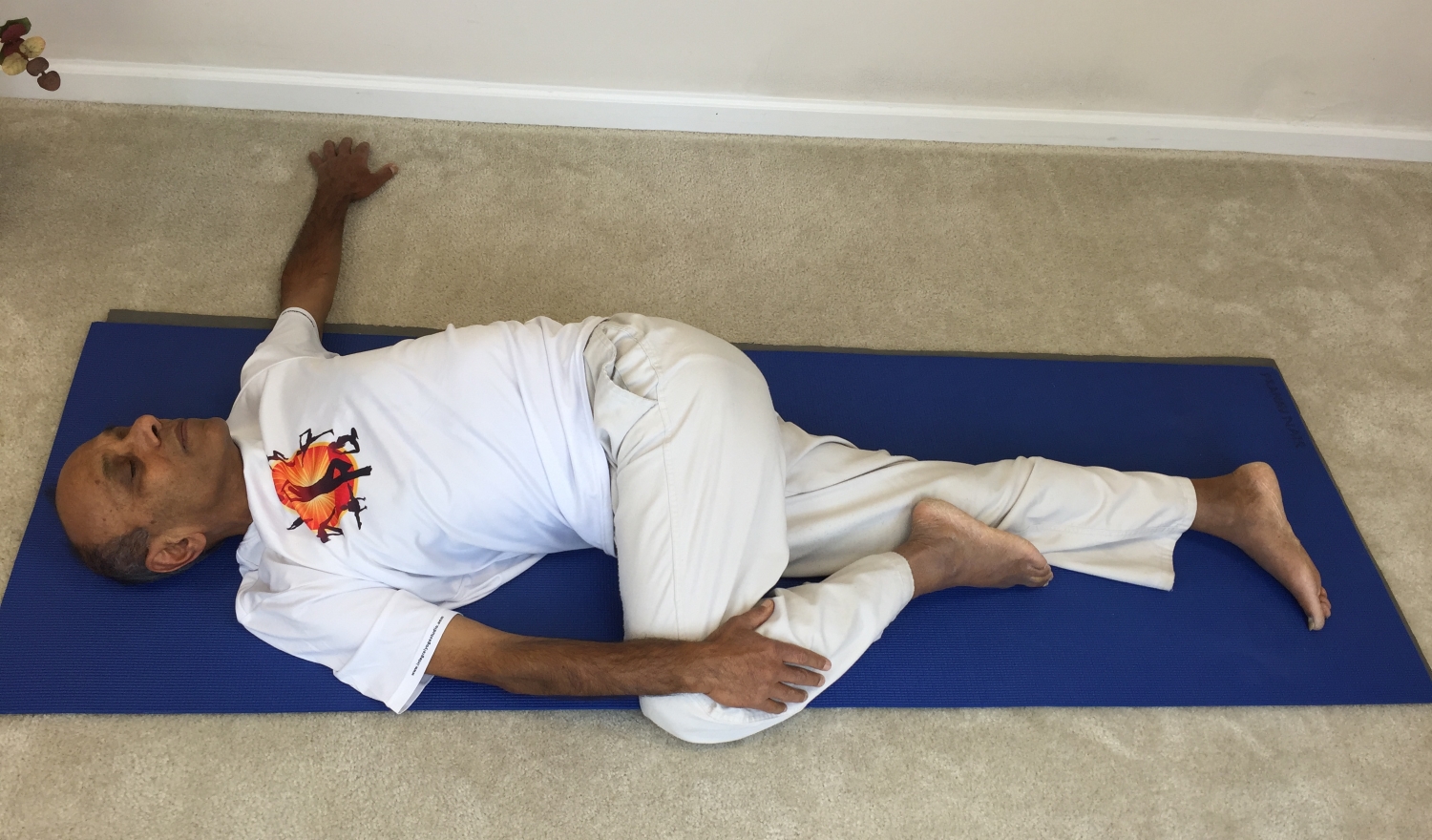
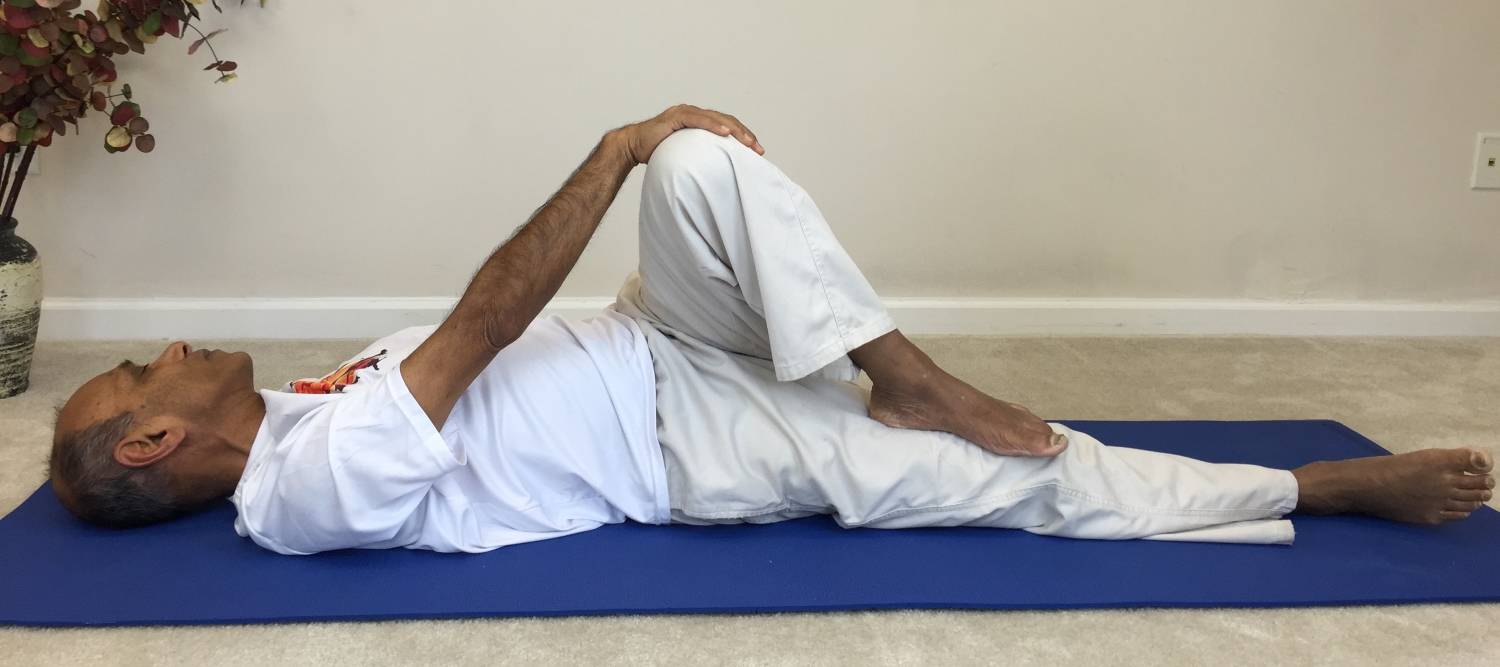
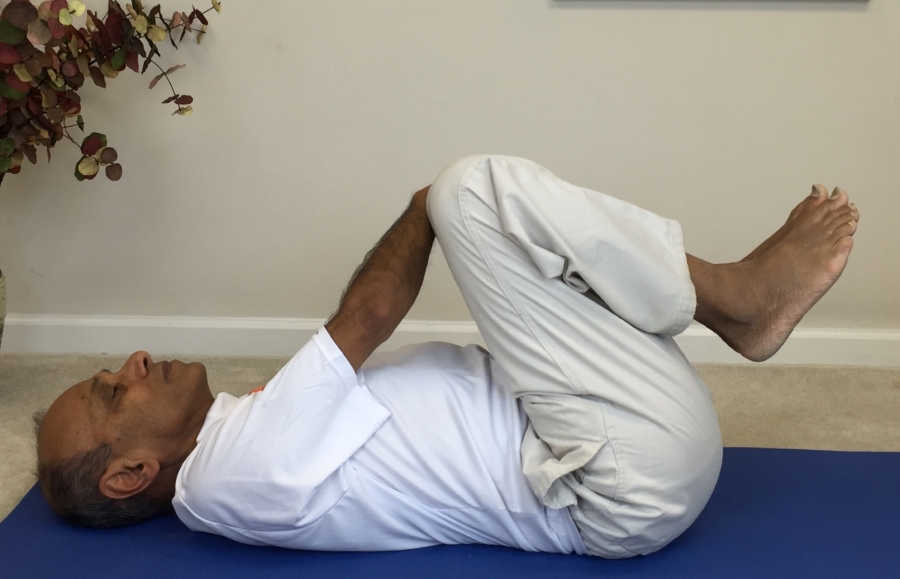
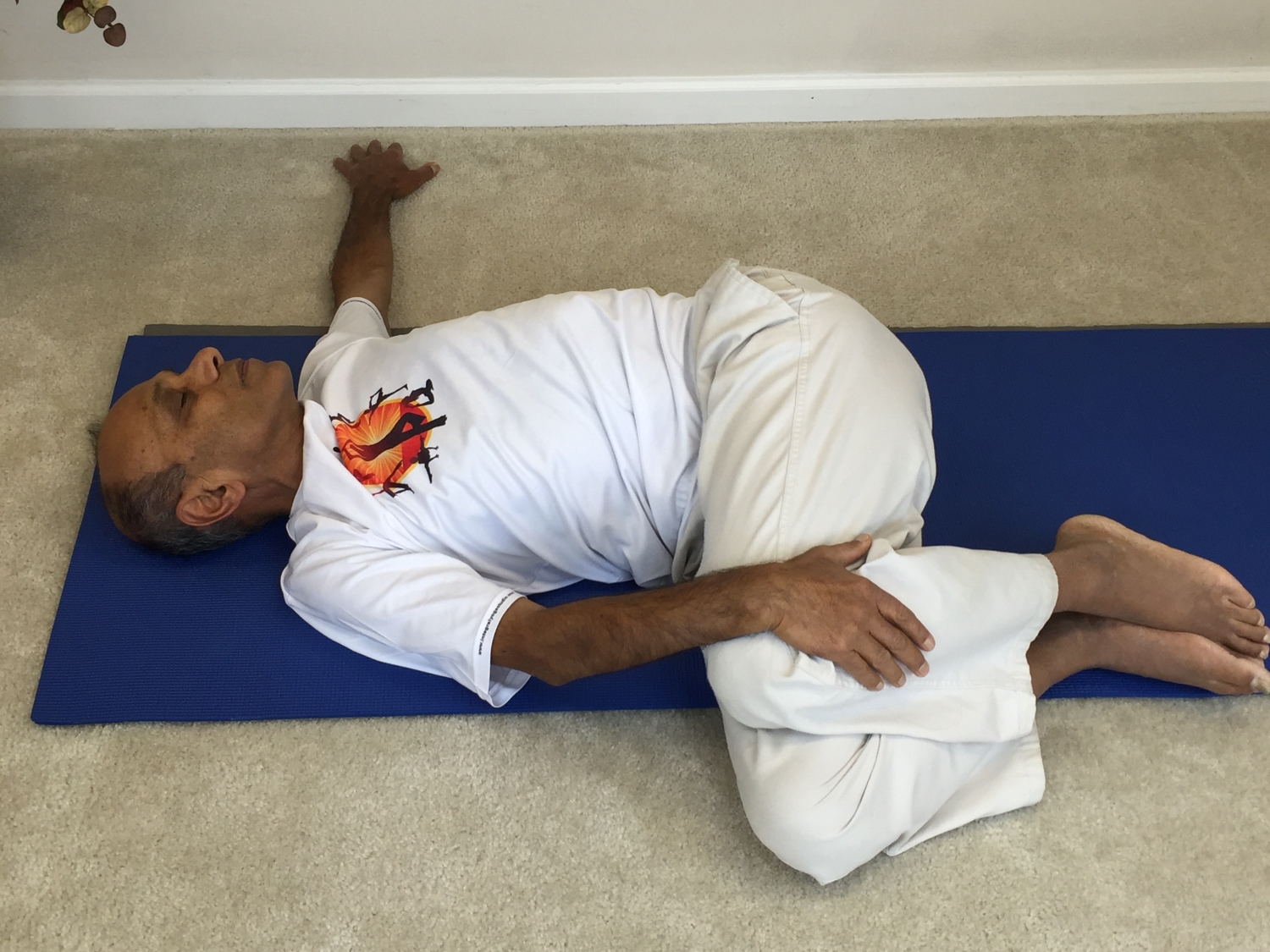
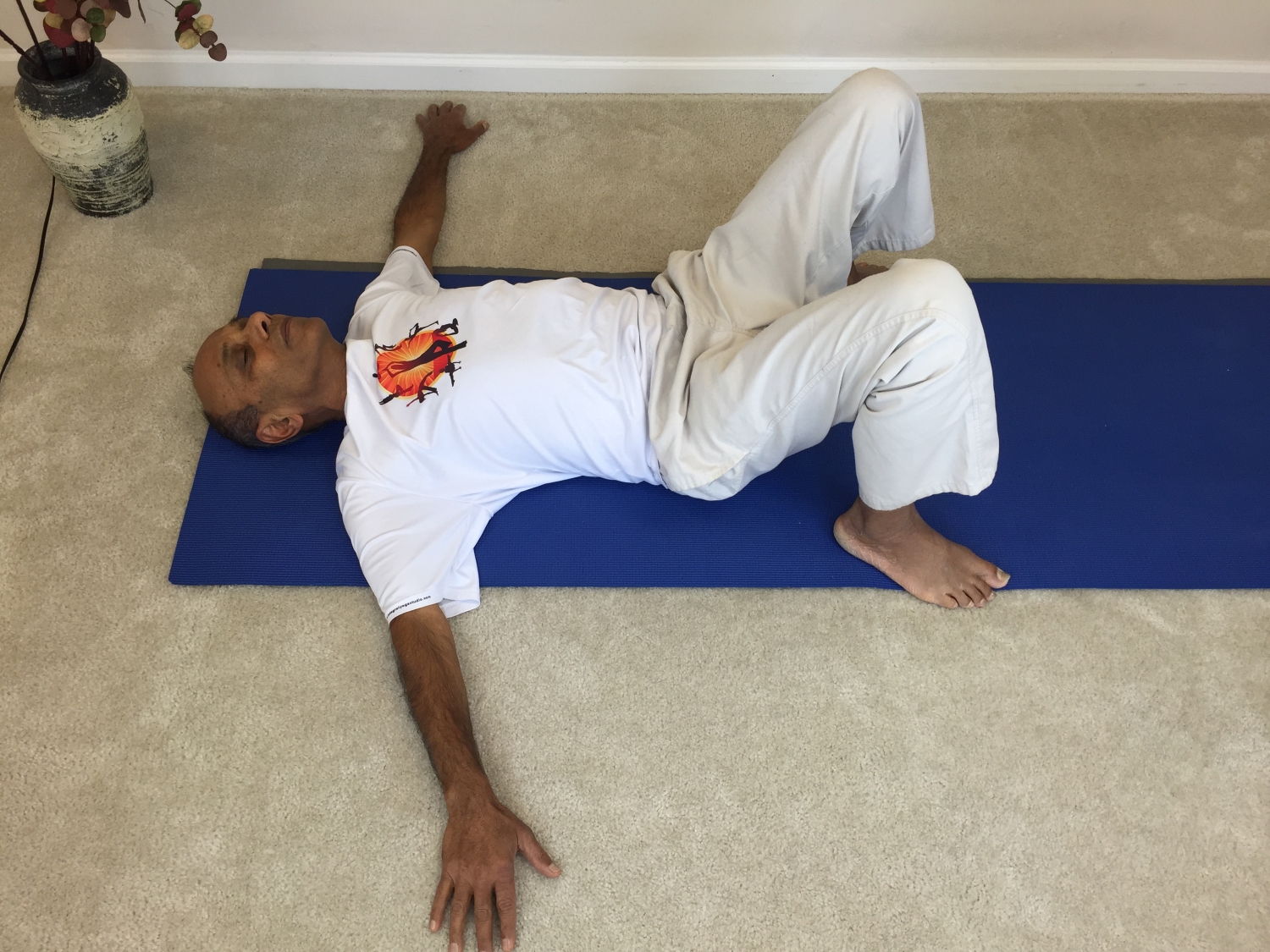

Hello sir this is Vikram from Mangalore . I have been tratak for some years nw . I have a doubt and want to clear it. Whenever I do tratak the object goes out of focus like it blooms like a flower and sometimes the object becomes two or double like a replica . I have read a book called practical hypnotism. In that they saw both are the signs of success. But recently I read in internet that if the object becomes double then it is due to the detachment of the retina.NW I am confused and scared . So I stopped doing it. I have seen some unexplainable things . Whenever I see some thing for example like a mountain I see pictures in it .some of people and some like dieties. I have even done kundalini jagaran.even when I sleep I have these dreams which become reality in someway or the other. Recently I had dream that I would go blind.plz help and guide me guruji . Which is the right way of tratak. My email is vickydev616@hotmail.com.
Hello Vikram,
My suggestion would be to try and establish authenticity of what you read on the internet. Please continue with your trataka practice. The only caution you want to take is that you should close the eyes if the eyes begin to water or if they feel any kind of strain. Double images are bound to appear during trataka.